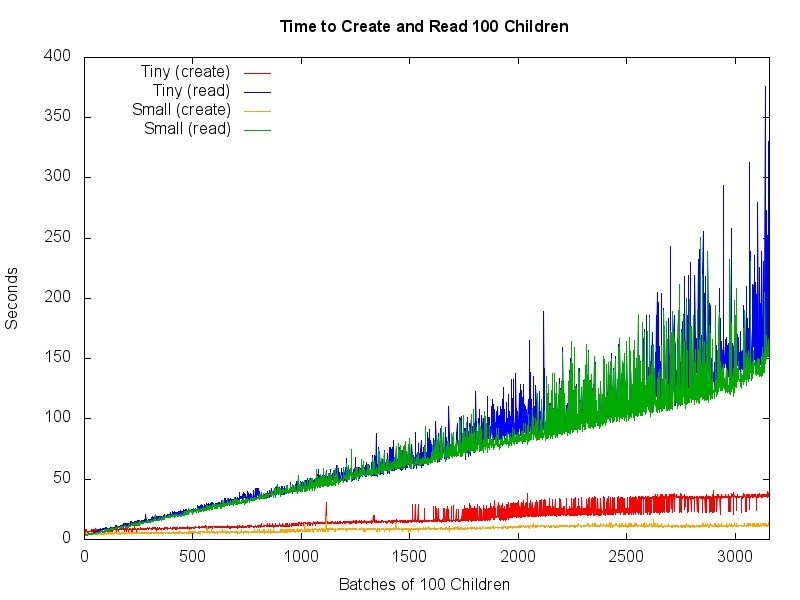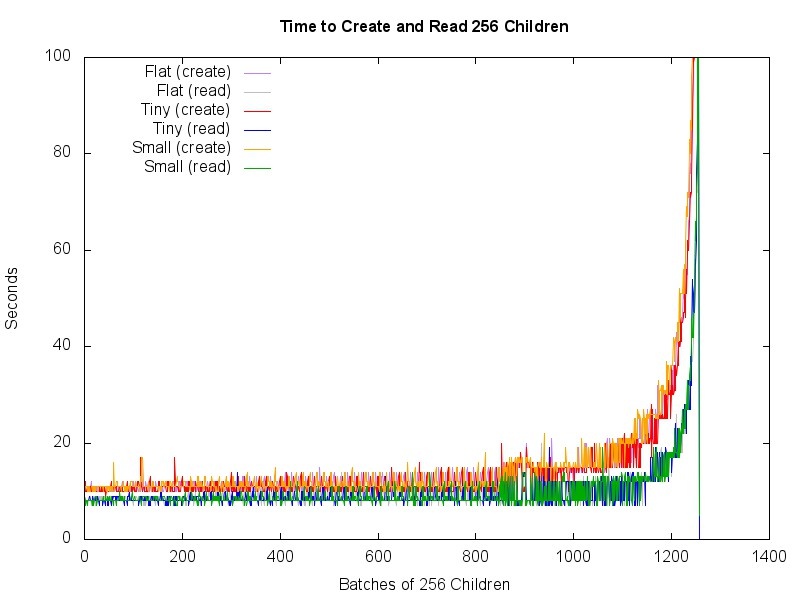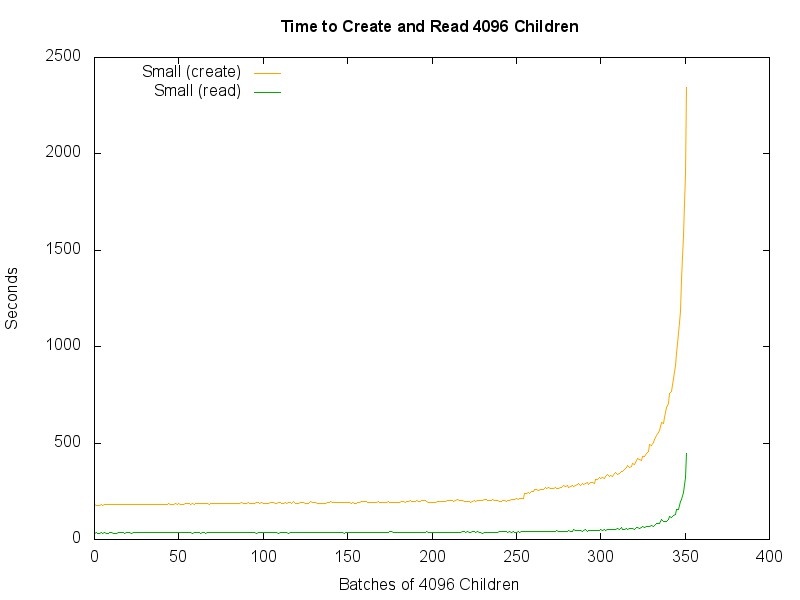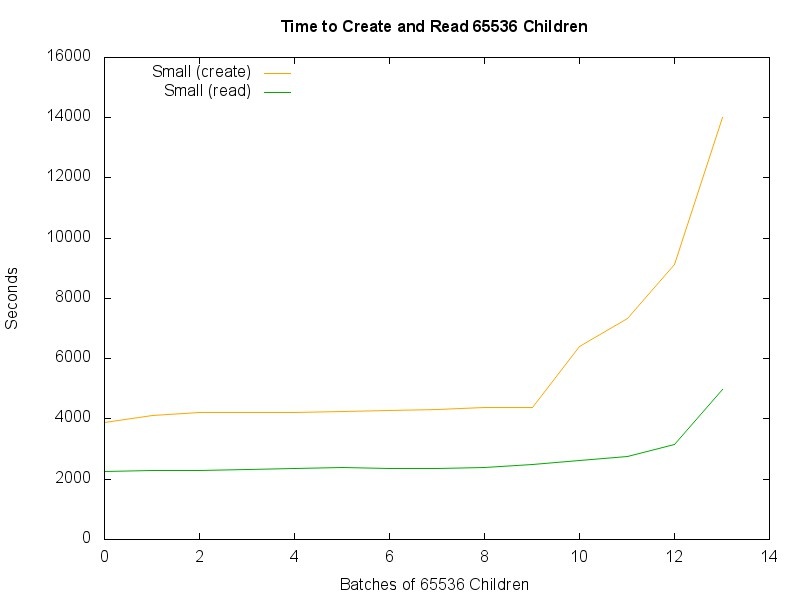...
| Name | Container | Child Nodes |
|---|---|---|
| PairTree | default | default auto-generated IDs |
| Flat | default | all children created directly in the container |
| Tiny | mode:unorderedTinyCollection | all children created directly in the container |
| Small | mode:unorderedSmallCollection | all children created directly in the container |
| Large | mode:unorderedLargeCollection | all children created directly in the container |
| Huge | mode:unorderedHugeCollection | all children created directly in the container |
Tests
| Table of Contents |
|---|
Creating Containers
For each type tested (Flat, Tiny, Small, Large, Huge), use Curl to create 100 children. Count the number of seconds to create the 100 children (write time).
...
Based on the previous test, the Tiny and Small unordered collections seemed the most promising. Repeat the previous test with only Tiny and Small containers, and continue testing with larger numbers of children to see how many children they can contain before performance degrades.
- Status: Test still running, 170K 300K children created in each container so far
- Read Performance: Both scaling smoothly through 100K children, and becoming more erratic afterwards, with Small performing marginally better.
- Write Performance: Both scaling smoothly, with Small performing significantly better.
Creating and Reading Containers (1-Level Hierarchy)
To see if the limitation was the number of children directly under a single container, run a new set of tests with a 1-level hierarchy, with 1000 contianers each containing 1000 children.
- Status: 300K children created in each container
- Read Performance: Very little difference between the different container types, with performance degrading sharply after about 275K children.
- Write Performance: Very little difference between the different container types, with performance degrading sharply after about 225K children.
Creating and Reading Containers (2-Level Hierarchy)
To see if a deeper hierarchy would improve performance, run a new set of tests with a 2-level hierarchy, with 256 containers, each containing 256 child containers, each containing 256 children.
- Status: 300K children created in each container
- Read Performance: Very little difference between the different container types, with performance degrading sharply after about 1150 batches (295K children).
- Write Performance: Very little difference between the different container types, with performance degrading sharply after about 1150 batches (295K children).
Creating and Reading Containers (3-Level Hierarchy, 100 Nodes per Level)
To see if using multiple container types in the same tests and repository was impacting other container types, run a new set of tests with only Small containers, with a 2-level hierarchy, with 100 top-level containers, each containing 100 child containers, each containing 100 children.
- Status: 600K children created
- Read Performance: Steadily increased until around 600K children, then repository failure.
- Write Performance: Roughly constant with increasing repository size.
Creating and Reading Containers (2-Level Hierarchy, 2K Nodes per Level)
Trying a flatter hierarchy, with a larger number of child nodes at each level: 2048 top-level containers, each with 2048 children.
- Status: 1.2M children created
- Read Performance: Very slowly increasing until around 1.2M children, then dramatically increasing.
- Write Performance: Very slowly increasing until around 1.2M children, then dramatically increasing.
Creating and Reading Containers (2-Level Hierarchy, 4K Nodes per Level)
Trying a larger number of child nodes at each level, 4096 top-level containers, each with 4096 children.
- Status: 1.4M children created
- Read Performance: Very slowly increasing until around 1.4M children, then dramatically increasing.
- Write Performance: Very slowly increasing until around 1.4M children, then dramatically increasing.
Creating and Reading Containers (2-Level Hierarchy, 64K Nodes per Level)
Trying a larger number of child nodes at each level, 65,536 top-level containers, each with 65,536 children.
- Status: 850K children created
- Read Performance: Very slowly increasing until around 590K children, then sharply increasing.
- Write Performance: Very slowly increasing until around 785K children, then sharply increasing.






